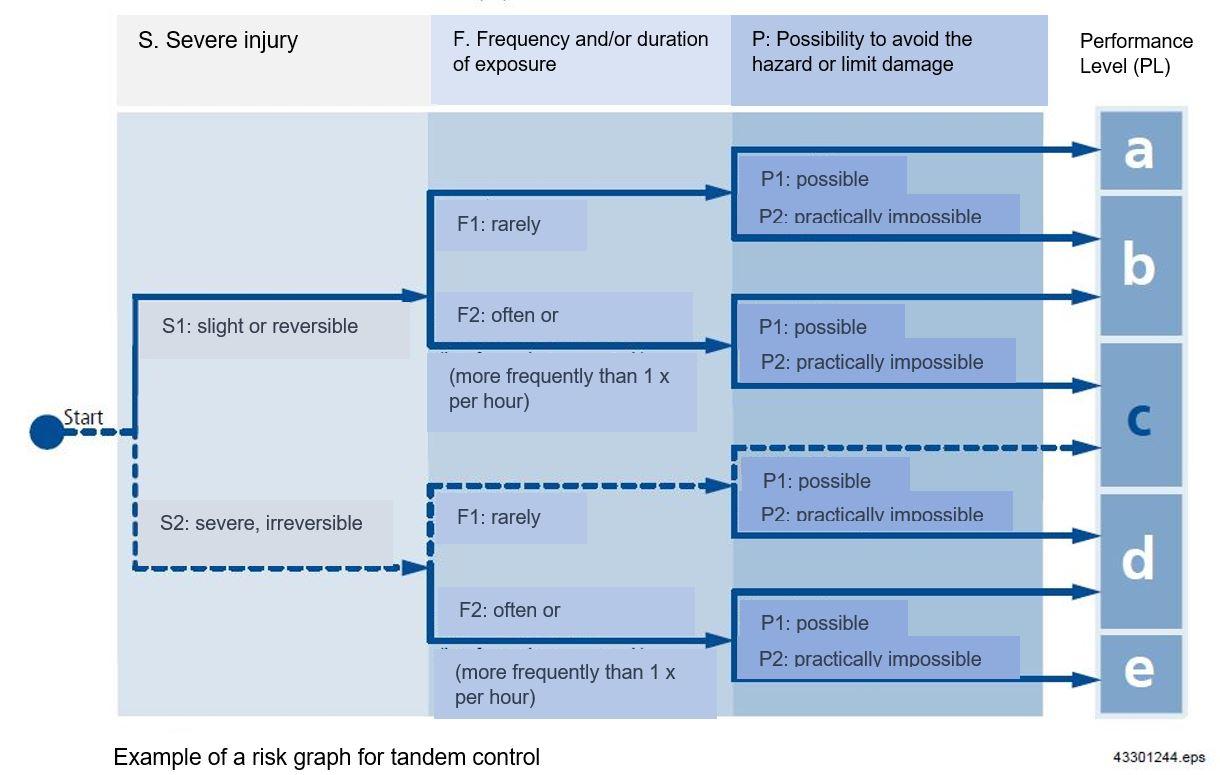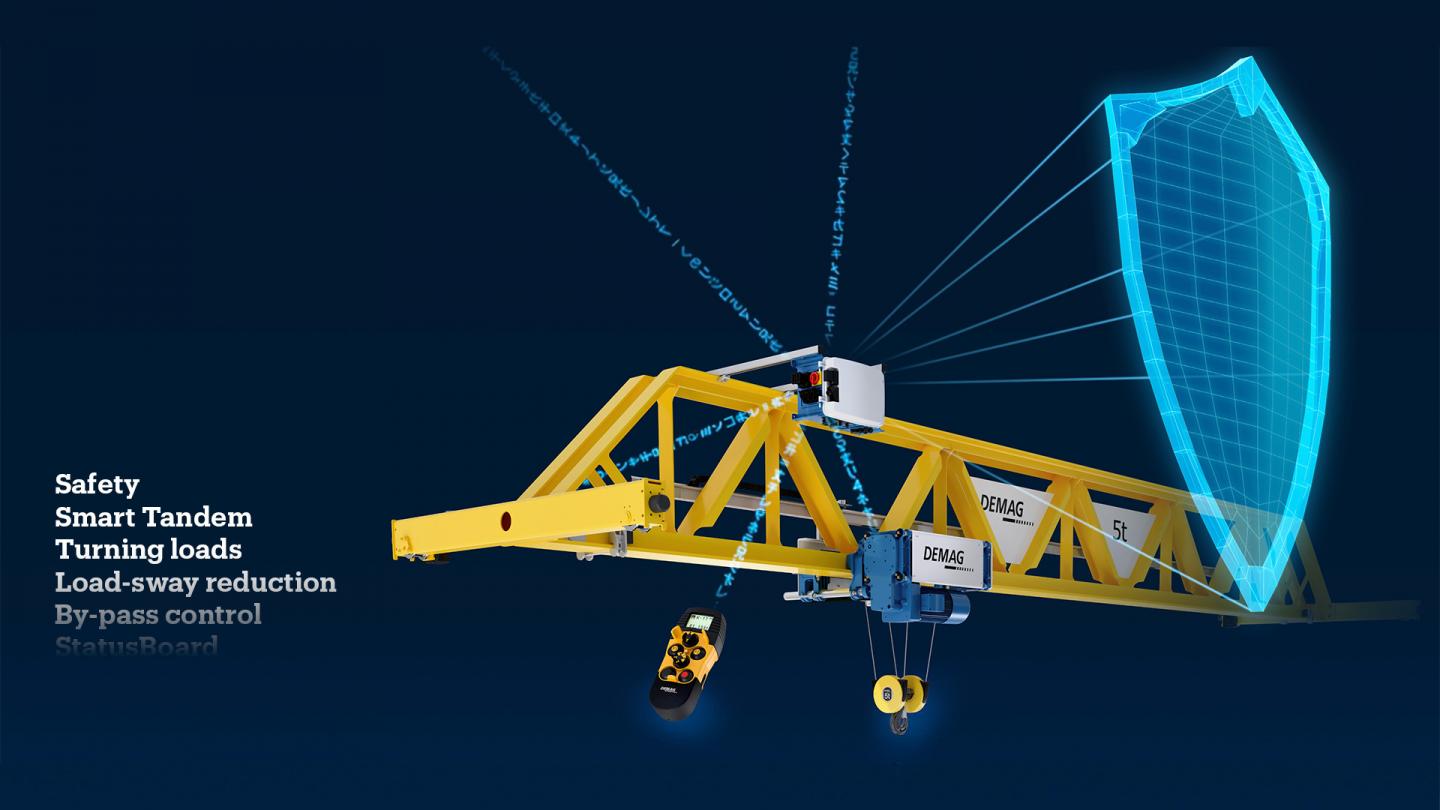Safety during crane operation
The combination of crane control and wireless control concept creates the link between an operator and a crane and thus makes optimum load handling a tangible experience. Absolutely safe operation of a crane or a system of several cranes must always be guaranteed – safety for the crane operator as well as for the transported goods and surrounding infrastructure.
The smart Demag SafeControl system enables independent and continuous monitoring of a crane on the basis of a largely redundant control concept to bring the system to a standstill independently if any irregularities occur. Furthermore, dangerous conditions can be identified and prevented in advance. The crane operator can concentrate fully on his/her work at all times thanks to the safety control system. A crane can be conveniently and intuitively controlled by radio, which is also very efficient. The safety control system combined with radio control can ensure gentle handling and precise positioning of loads. This meets our high demands for safe and reliable crane control.
The SafeControl system can reveal its full potential wherever a crane needs to meet complex operating and control requirements. The safety control system provides the technical basis for implementing tandem crane control, smart-tandem crane control, the turning of loads and load-sway reduction as well as for other complex requirements, such as a crane by-pass control. Demag SafeControl enables safety-related control functions up to Performance Level d in accordance with EN ISO 13849 or SIL 2 in accordance with EN 61508.
Benefits of Demag SafeControl
- Crane operation additionally protected by continuous, independent monitoring of basic crane functions
- High productivity thanks to optimized load handling
- User-friendly control for complex applications
- Technical basis for a safety-related control system for almost all load handling needs
- Safety-related control functions up to Performance Level d according to EN ISO 13849, or SIL 2 according to EN 61508
- Two-channel hardware enables independent safety cut-off and corresponds to Category 3 (CAT 3) according to EN 13849-1
- TÜV certified
Safe, good to know
Technical background
SafeControl provides the basis for a large variety of safety-related applications and is suitable for a wide range of crane and lifting equipment applications. This applies to requirements for the pure lifting and lowering of loads, in addition to complex and safety-sensitive tasks, such as tandem control or turning of loads.
SafeControl is a modular control system consisting of decentrally arranged control modules as well as various additional hardware modules (I/O extension module, radio receiver, large load display and others). Communication between these control modules is wireless or wired via a CAN bus.
The firmware covers a wide range of control functions, including various assistance features. The control functions can be activated via a parameter-programming interface. The modular SafeControl control system enables safety-related control functions up to Performance Level d according to EN ISO 13849 or SIL 2 according to EN 61508. The control system hardware operates completely on two channels so that control functions can be executed in category 3. This is certified by TÜV.
Performance level – safety can be defined
The performance level is defined in the EN 13849 standard as a “discrete level used to specify the ability of safety-related parts of control systems to perform a safety function under foreseeable conditions.”
The performance level can thus provide a basis for assessing the reliability of a safety function. The performance level is divided into five levels, from level a (low performance level) to level e (highest performance level).
The higher the performance level, the safer and more reliable the given function. Before a component is used, it must be checked to ensure it can be used for the intended application and the assessed risk. The rule is that the performance level of the component must always be at least as high as the risk value at the relevant point.
A risk assessment is carried out according to the EN 13849 standard and assesses the possible extent of damage, the frequency and duration of stay and the possibility of avoiding the hazard.
 Example of a decision diagram to determine the performance level according to the risk assessment for a tandem control system.
Example of a decision diagram to determine the performance level according to the risk assessment for a tandem control system.





